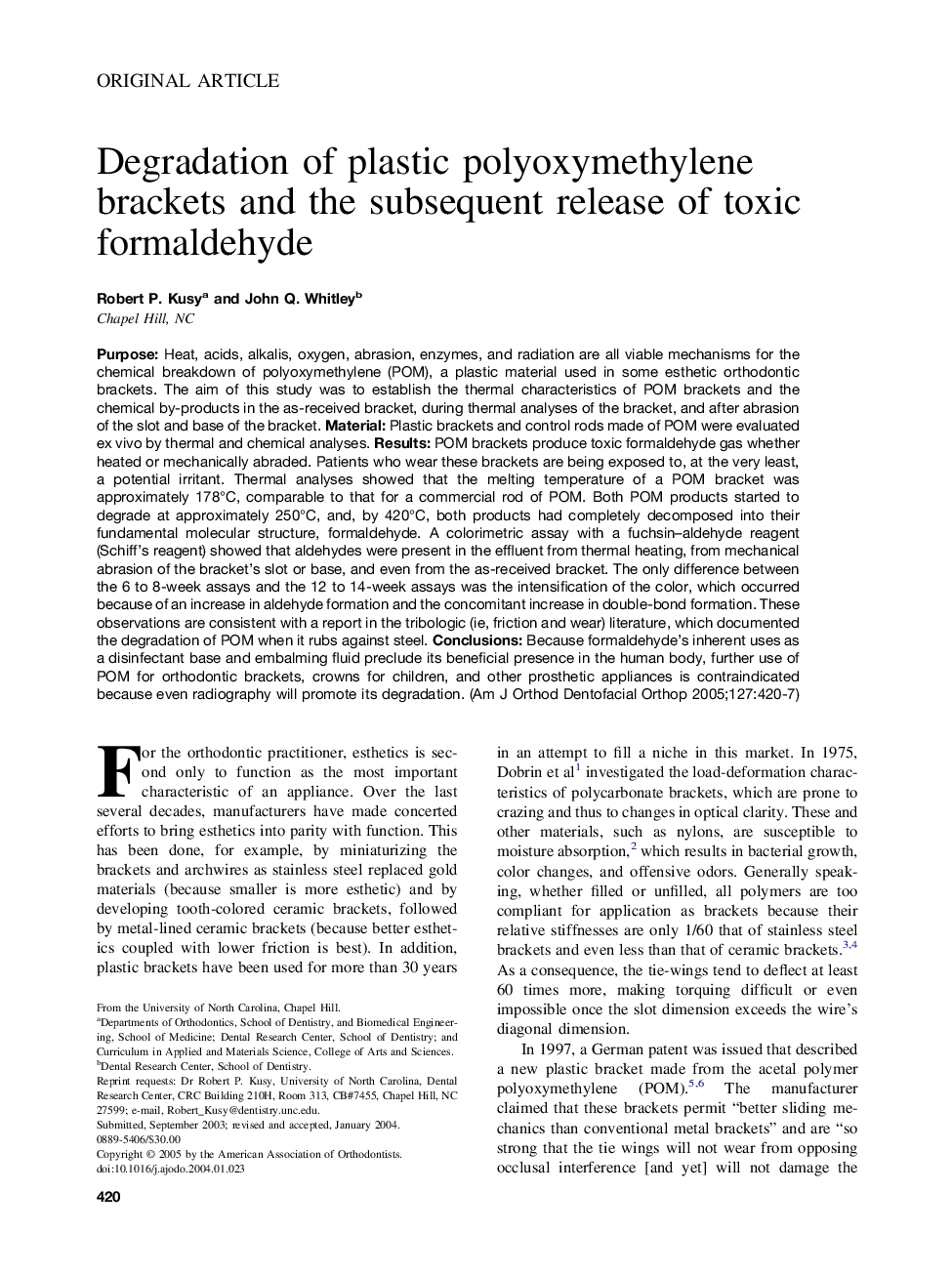| کد مقاله | کد نشریه | سال انتشار | مقاله انگلیسی | نسخه تمام متن |
|---|---|---|---|---|
| 9992983 | 1582820 | 2005 | 8 صفحه PDF | دانلود رایگان |
عنوان انگلیسی مقاله ISI
Degradation of plastic polyoxymethylene brackets and the subsequent release of toxic formaldehyde
دانلود مقاله + سفارش ترجمه
دانلود مقاله ISI انگلیسی
رایگان برای ایرانیان
موضوعات مرتبط
علوم پزشکی و سلامت
پزشکی و دندانپزشکی
دندانپزشکی، جراحی دهان و پزشکی
پیش نمایش صفحه اول مقاله

چکیده انگلیسی
Purpose: Heat, acids, alkalis, oxygen, abrasion, enzymes, and radiation are all viable mechanisms for the chemical breakdown of polyoxymethylene (POM), a plastic material used in some esthetic orthodontic brackets. The aim of this study was to establish the thermal characteristics of POM brackets and the chemical by-products in the as-received bracket, during thermal analyses of the bracket, and after abrasion of the slot and base of the bracket. Material: Plastic brackets and control rods made of POM were evaluated ex vivo by thermal and chemical analyses. Results: POM brackets produce toxic formaldehyde gas whether heated or mechanically abraded. Patients who wear these brackets are being exposed to, at the very least, a potential irritant. Thermal analyses showed that the melting temperature of a POM bracket was approximately 178°C, comparable to that for a commercial rod of POM. Both POM products started to degrade at approximately 250°C, and, by 420°C, both products had completely decomposed into their fundamental molecular structure, formaldehyde. A colorimetric assay with a fuchsin-aldehyde reagent (Schiff's reagent) showed that aldehydes were present in the effluent from thermal heating, from mechanical abrasion of the bracket's slot or base, and even from the as-received bracket. The only difference between the 6 to 8-week assays and the 12 to 14-week assays was the intensification of the color, which occurred because of an increase in aldehyde formation and the concomitant increase in double-bond formation. These observations are consistent with a report in the tribologic (ie, friction and wear) literature, which documented the degradation of POM when it rubs against steel. Conclusions: Because formaldehyde's inherent uses as a disinfectant base and embalming fluid preclude its beneficial presence in the human body, further use of POM for orthodontic brackets, crowns for children, and other prosthetic appliances is contraindicated because even radiography will promote its degradation.
ناشر
Database: Elsevier - ScienceDirect (ساینس دایرکت)
Journal: American Journal of Orthodontics and Dentofacial Orthopedics - Volume 127, Issue 4, April 2005, Pages 420-427
Journal: American Journal of Orthodontics and Dentofacial Orthopedics - Volume 127, Issue 4, April 2005, Pages 420-427
نویسندگان
Robert P. Kusy, John Q. Whitley,